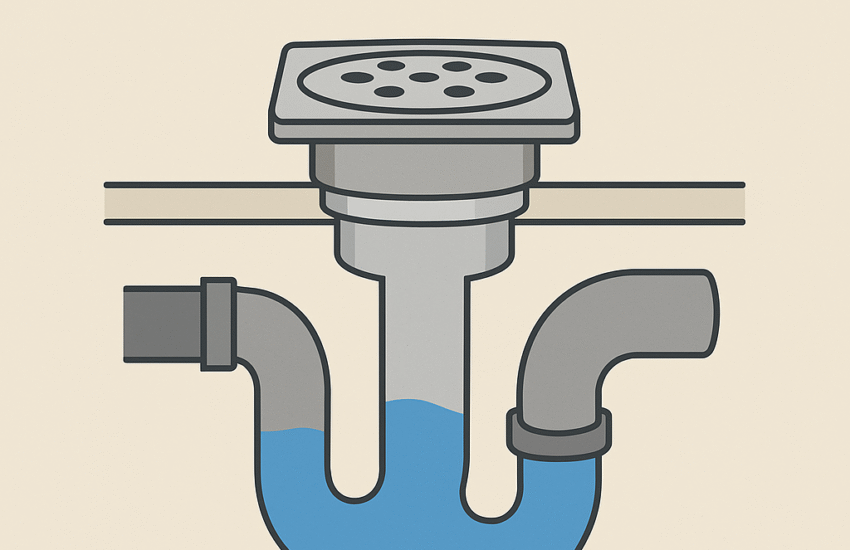A Nahani trap is a specific plumbing fitting commonly used in residential and commercial washroom installations across South Asia. Its unique shape and function make it ideal for preventing unpleasant sewer gases from entering living spaces, while ensuring efficient drainage. In this post, we’ll explore what a Nahani trap is, how it works, its installation guidelines, and best practices for maintenance.
Understanding the Nahani Trap in Plumbing
The Nahani trap, sometimes spelled “Nehani trap,” is a water seal trap installed directly beneath a wash basin or floor drain. Unlike the familiar P-trap, the Nahani trap sits flush with the floor surface and features:
- A U-shaped water seal to block sewer odors
- A removable cover or strainer for debris capture
- A compact form factor ideal for tight crawl spaces
This design has been a plumbing staple in Indian and Middle Eastern construction for decades.
Purpose and Function
Every trap in plumbing relies on a water barrier to prevent backflow of gases and insects from the sewer line. The Nahani trap’s key roles are:
- Retaining a permanent water seal (typically 20–50 mm deep)
- Facilitating rapid drainage of sink or floor water
- Allowing easy cleaning through a side-access coupler or top cover
Because it sits close to the fixture, it minimizes the horizontal run of drain pipes, reducing clog points.
Components and Materials
A standard Nahani trap assembly comprises:
- Trap Body: Usually cast iron, PVC, or HDPE
- Top Strainer: Stainless steel or ABS plastic grate
- Gasket and O-ring: EPDM or neoprene for leak-proof joints
- Access Plug/Coupler: For cleaning blockages
Selecting corrosion-resistant materials ensures longevity in hard-water or chemically aggressive environments.
Installation Guidelines
Proper placement and alignment are crucial. Follow these steps:
- Positioning
- Embed the trap level with the finished floor.
- Align inlet and outlet to the fixture drain and soil pipe.
- Connection
- Use solvent-weld (PVC) or mechanical clamps (HDPE) per manufacturer specs.
- Ensure a minimum water seal depth of 25 mm.
- Testing
- Pour water into the fixture to verify the seal and check for leaks.
- Inspect the access cover for flush fit and easy removal.
Adhering to local plumbing codes guarantees performance and safety.
Compliance and Codes
While many international codes don’t explicitly name “Nahani trap,” they mandate:
- A minimum trap seal depth (usually 25 mm)
- Accessible clean-out for every trap
- Proper venting within 2–3 m of the trap
Consult your regional building regulations to confirm allowable materials and venting distances.
Common Issues and Troubleshooting
Over time, Nahani traps can develop problems such as:
- Drying Out: Infrequently used fixtures may lose their water seal.
- Blockages: Hair, soap scum, and debris collect under the strainer.
- Leaks: Worn gaskets or cracked bodies cause seepage into the floor.
Quick fixes include flushing with water, removing the strainer to clear debris, and replacing gaskets. For major cracks, swap out the entire trap body.
Maintenance Best Practices
Routine care keeps your Nahani trap functioning optimally:
- Clean the top strainer weekly to prevent buildup.
- Pour a gallon of water through unused fixtures monthly.
- Inspect gaskets and O-rings annually and replace if hardened.
These simple steps protect your water seal and reduce foul-odor complaints.
Nahani Trap vs. Other Trap Types
| Feature | Nahani Trap | P-Trap | S-Trap |
|---|---|---|---|
| Installation Level | Floor-level | Under-sink | Direct soil pipe |
| Cleaning Access | Top or side port | Quick-disconnect | Typically none |
| Water Seal Depth | 20–50 mm | 38–50 mm | Variable |
| Vent Requirement | Within 2–3 m | Within 3 m | Not code compliant |
| Ideal Use Case | Washrooms/floors | Kitchen/bathroom | Obsolete in many areas |
Conclusion
The Nahani trap is a cost-effective, and space-saving solution for washroom drainage, combining a reliable water barrier with easy access for cleaning. By understanding its components, installation needs, and maintenance routines, you’ll ensure lasting protection against sewer gases and blockages.
Read Also-
Building Planning and Drawing Textbook pdf
International Residential Code 2018
